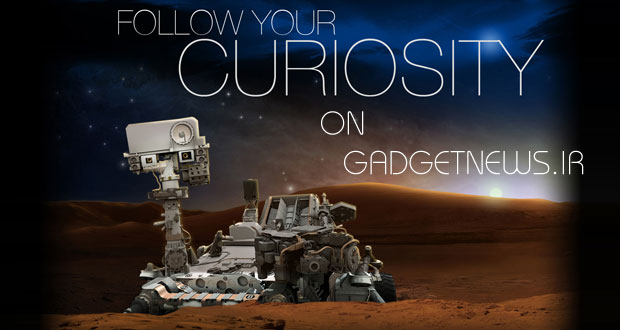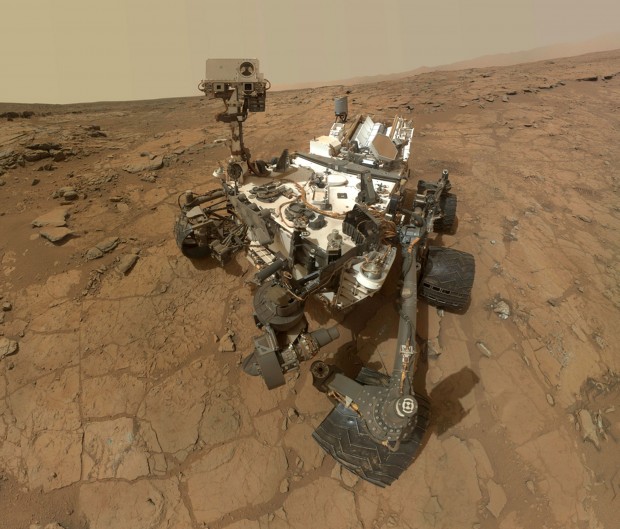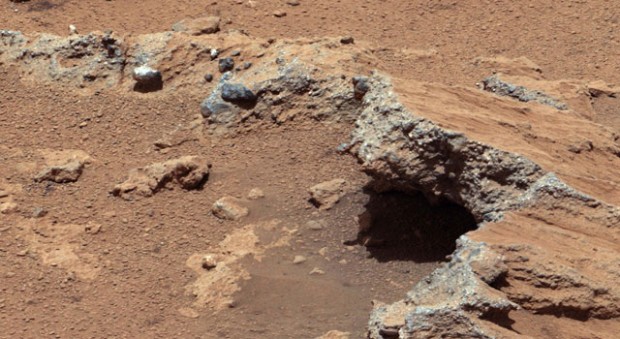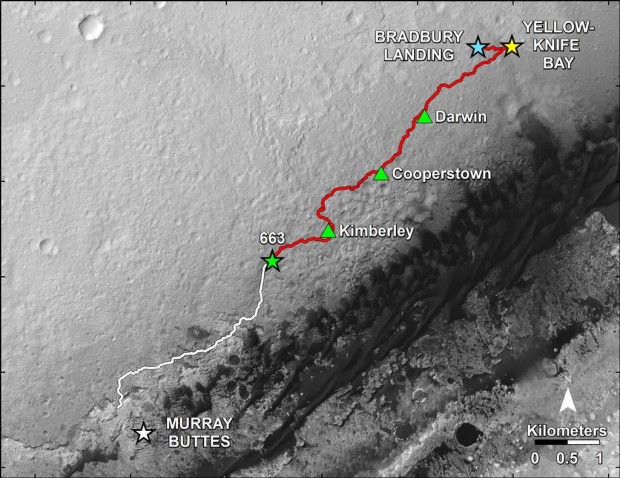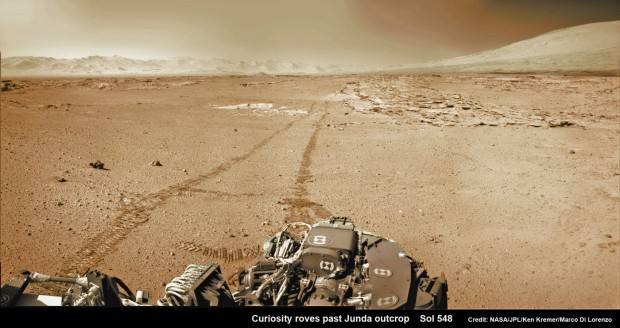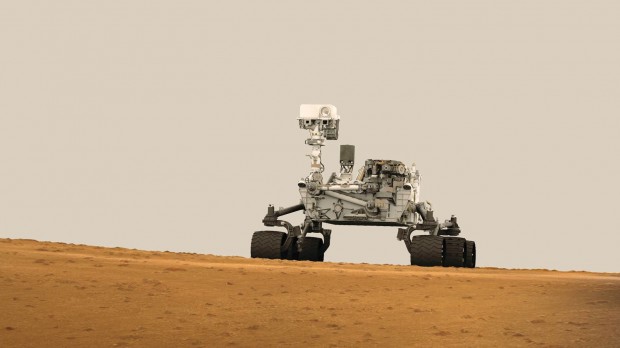سه شنبه گذشته مصادف با پنجم آگوست 2014 ، مریخ نورد کنجکاوی ( Curiosity ) جشن تولد دو سالگی حضور خود در سیاره مریخ را جشن گرفت.درست دو سال قبل از این تاریخ بود که کاوشگر کنجکاوی ناسا در دهانه گودال گیل سیاره مریخ فرود آمد و برگ جدیدی از داستان کاوش بشر در سیارات بیگانه ورق خورد.
این کاوشگر با قدرت هستهای، در اولین سال ماموریت خود، عملیات زیادی را به عهده داشت. تا قبل از ساخت کنجکاوی که لقب بزرگترین و پیشرفتهترین مریخنورد تا به حال ساخته شده را به خود اختصاص داده، هیچ وسیله فضایی مشابه دیگری به فضا فرستاده نشده بود، از این رو در اولین ماههای حضور آن بر روی سطح مریخ، تستهای سیستمی زیادی بر روی آن انجام شد، پیش از آنکه کنجکاوی اولین حرکات خود بر روی ماسههای مریخ را به سمت کوه شارپ آغاز کند.البته ناسا قبلا هم 2 کاوشگر دیگر با نام های روح و فرصت را به مریخ فرستاده بود اما هیچکدام از آنها به پیشرفتگی و کارامدی کنجکاوی نبوده اند.(مریخ نورد فرصت همچنان در سیاره مریخ در حال انجام ماموریت است )
ماموریت کنجکاوی، یافتن مکانی بر روی سطح مریخ است که شاید زمانی در آن حیات وجود داشت. در این ماموریت، کنجکاوی نسبتا موفق عمل کرده است. منطقهای نزدیک به جایگاه بردبوری با نام یلونایف بی (Yellowknife Bay) بسیار به یک بستر رودخانهی خشکشدهی قدیمی شبیه است. بنا به اعلام ناسا، این بستر دریاچهای شاید میلیاردها سال پیش جایگاه حیات بوده است، زیرا دارای تمامی پیشنیازهای لازم مانند آب، عناصر شیمیایی و منبع انرژی شیمیایی میباشد.
یکی از محققان پروژهی کنجکاوی با نام جان کراتزینگر میگوید: “قبل از فرود، انتظار طی مسافت بیشتری را برای یافتن مکانی مناسب جهت پاسخگویی به سوالهای خود داشتیم. اما توانستیم در یک فاصلهی خیلی نزدیک به محل فرود به مکان مورد نظر خود دست یابیم. اکنون میخواهیم نحوهی تاثیر شرایط محیطی را بر روی مریخ مطالعه کنیم.”
سال اول حضور کنجکاوی بر روی مریخ موجب شکلگیری اولینهای زیادی شد، مانند اولین عملیات حفاری بر روی مریخ، اولین گرمایش لیزری و اولین اسکن شبانهی فرابنفش. اما دومین سال حضور کنجکاوی بر روی سیارهی سرخ با عملکرد طبیعیتری همراه بود، با این حال خالی از حادثه نبوده است. در ماه فوریه این مریخنورد توانست تپهای را که مسیر پیشرویاش را مسدود کرده بود، هموار کند و در ماه جولای مسیر انحرافی حول یک سطح صخرهای در فلات Zabriskie Plateau را طی نمود.
در نظر دانشمندان، سال دوم ماموریت کنجکاوی هم شگفتیهای خود را به دنبال داشت. بزرگترین شگفتی این سال، فقدان گاز متان در اتمسفر مریخ بود. از آنجایی که متان نقش کلیدی در حیات بیولوژیکی دارد، این فقدان شانس یافتن حیات بر روی مریخ را کاهش داد.
کنجکاوی به نظارت سطح تشعشات بر روی سطح مریخ به عنوان پیشدرآمدی برای سفرهای احتمالی سرنشیندار آینده میپردازد. ناسا اعلام کرده اگرچه سطح این تشعشات بالا است، اما ثابت میباشند.
در حال حاضر، کنجکاوی مسیر خود را به سمت مکان جدید خود که در دو مایلی (3.2km) موقعیت فعلی قرار دارد، طی میکند. محل توقف بعدی این مریخنورد، برآمدگی با نام Pahrump Hills میباشد.
منبع : gizmag
Curiosity marks two years on Mars
Curiosity marks two years on Mars
Break out the party hats – NASA’s Curiosity rover is celebrating its second anniversary on Mars. On August 5, 2012 at 10:31 pm PDT (August 6, 05:31 GMT), the unmanned spacecraft touched down at Bradbury Landing in Gale Crater on the start of a multi-year mission to seek out areas where life could or may once have existed, and is now preparing to carry on for a third year.
The nuclear-powered explorer had a very busy first year. As the largest, most advanced rover ever built, nothing like this had ever flown before and since the nearest garage was a hundred million miles away, the first months that Curiosity spent on Mars involved an array of system tests before it took it first tentative rolls across the Martian sands on its roundabout path to Mount Sharp.
Curiosity’s main mission was to find out if there are any places on Mars where life could have once existed – specifically, areas displaying minerals and geology that could have been produced by water. In this, Curiosity was very lucky. Bradbury Landing turned out to be very close to an ancient dried lake bed in an area named Yellowknife Bay. According to NASA, this lake bed may have been able to sustain microbial life billions of years ago because it contained all the general prerequisites; water, the right chemical elements, and a chemical source of energy.
“Before landing, we expected that we would need to drive much farther before answering that habitability question,” says Curiosity Project Scientist John Grotzinger of the Caltech. “We were able to take advantage of landing very close to an ancient streambed and lake. Now we want to learn more about how environmental conditions on Mars evolved, and we know where to go to do that.”
Compared to its first year, which was marked by many firsts, such as the first drilling operation on Mars, the first laser firing, and first UV night scans, Curiosity’s second year on the Red Planet has been more routine. However, it hasn’t been without incident. In February, the rover cleared a dune that blocked its progress and in July it negotiated a detour around rocky terrain at Zabriskie Plateau. The latter was of particular concern because NASA has noticed that the six aluminum wheels that carry Curiosity are wearing faster than anticipated.
NASA says that time is taking its toll on the computer systems as well with mission control nursing Curiosity’s two computers to make sure they both remain in proper working order. It had to switch to its B computer after the A computer started acting up, and in July the rover got a two-day holiday as technicians confirmed that the A computer could still act as a backup should the need arise.
On the science side, year two has had its share of surprises. The biggest one is the total lack of methane gas detected in the Martian atmosphere. Because methane is a key indicator of biological activity, this was a blow to chances of finding life on Mars today. Worse, it meant that other sources of methane are absent on Mars as well, which poses some head-scratching questions.
On the plus side, Curiosity has been monitoring the radiation on the Martian surface as a prelude to manned expeditions. NASA says that though the levels are high, they are consistent with predictions.
Currently, Curiosity is making its way toward new areas of study about 2 miles (3.2 km) from its present position. It’s next stop is a rock outcrop called “Pahrump Hills,” which lies about 1 mile away on Zabriskie Plateau.
 گجت نیوز آخرین اخبار تکنولوژی، علم و خودرو
گجت نیوز آخرین اخبار تکنولوژی، علم و خودرو 






